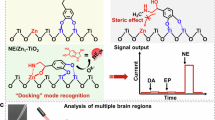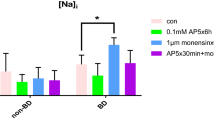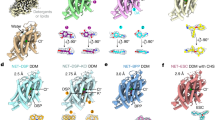Abstract
THE reaction of ethylene diamine with epinephrine (and norepinephrine) leads to the formation of a highly fluorescent material which is used for the estimation of catechol amines in biological fluids according to a procedure first described by Weil-Malherbe and Bone1 and slightly modified by a number of other workers.
This is a preview of subscription content, access via your institution
Access options
Subscribe to this journal
Receive 51 print issues and online access
$199.00 per year
only $3.90 per issue
Buy this article
- Purchase on SpringerLink
- Instant access to full article PDF
Prices may be subject to local taxes which are calculated during checkout
Similar content being viewed by others
References
Weil-Malherbe, H., and Bone, A. D., Biochem. J., 51, 311 (1952).
Erne, K., and Canbäck, T., J. Pharm. Pharmacol., 7, 248 (1955).
Valk, A. de T., and Price, H. L., J. Clin. Invest., 35, 837 (1956).
Mangan, G. F., and Mason, J. W., Science, 126, 562 (1957).
Author information
Authors and Affiliations
Rights and permissions
About this article
Cite this article
NADEAU, G., JOLY, L. & SOBOLEWSKI, G. Influence of Metallic Ions on the Reaction of Ethylene Diamine with Epinephrine and Norepinephrine. Nature 181, 1061 (1958). https://doi.org/10.1038/1811061a0
Issue date:
DOI: https://doi.org/10.1038/1811061a0



